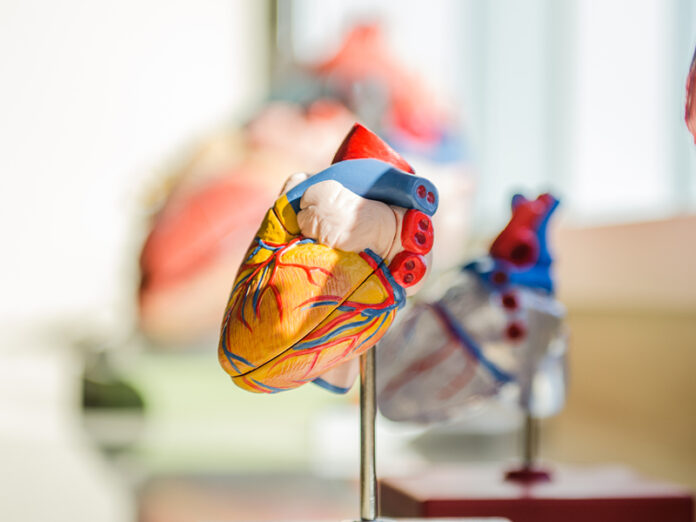
Dr. Caldwell Esselstyn Jr. says he has the answer to ending heart disease. All we have to do is change the way we eat.
“Coronary heart disease is nothing more than a toothless paper tiger that need never ever exist and if it does exist it need never ever progress,” Esselstyn tells IMPACT.
Heart attack and stroke account for 50 per cent of deaths in Canada. Drugs, stents, bypass surgery are the typical medical interventions but these don’t halt or cure the disease. They merely slow its progression and cost the Canadian health system $22 billion a year.
Esselstyn, a surgeon and author of the 2007 book, Prevent and Reverse Heart Disease, directs the cardiovascular prevention and reversal program at the Cleveland Clinic Wellness Institute in Ohio. He says the secret to eliminating heart disease lies in how we feed ourselves.
Since 1985, Esselstyn has been treating patients with cardiovascular disease with a nutrition-based program designed to boost nitric oxide production and lower cholesterol levels. Foods high in nitric oxide help nourish the endothelium, the lining and “guardian of our blood vessels.”
Eating animal products, including eggs and dairy, refined grains, caffeinated coffee, sugar, nuts, avocados and oil harm the endothelium and slowly, he says, are killing us.
All oils, including olive oil and coconut oil, are nutrient-poor food choices that impair blood flow. Fats naturally occurring in unrefined grains, legumes and vegetables are sufficient to support excellent health, he says.
Esselstyn says the foods to eat are whole grains, legumes, fruits and a spectrum of vegetables — especially green leafy ones. All are full of fibre, nutrients and antioxidants.
Nothing beats the anti-oxidativevalue of green leafy vegetables. “Whole-food, plant-based diets can restore the ability of endothelial cells to produce nitric oxide,” he says.
Esselstyn’s prescription for a healthy heart includes chewing green, leafy vegetables (a fist-sized portion of cooked greens) accompanied by a few drops of balsamic vinegar six times a day.
“Cholesterol is not what causes heart disease; it’s the foods we eat causing cracks and fissures in the endothelial fortress,” he says. This breakdown allows the benign cholesterol molecule to take root in the arterial wall, spurring “this whole cascade of oxidative inflammation and formation of plaque.”
Kate McGoey-Smith, of Calgary, turned to Esselstyn’s teaching after being diagnosed with high blood pressure and Type-2 diabetes. She was blind, on oxygen 24 hours a day and waiting for a lung transplant. After 15 months on Esselstyn’s program, McGoey-Smith’s vision was restored; her oxygen use reduced to nights only and she no longer needs a transplant. Instead of suffering dizziness and fainting spells, she exercises seven days a week and has dropped more than 100 pounds. Her diabetes has reversed — completely.
“My whole food plant-based journey is a lifetime commitment,” she says. “Some will say I do it because I was so seriously ill, but do you have to wait until you are that ill to make a change in your life?”
McGoey-Smith has launched two not-for-profit gratitude projects: Fork Smart and Heart Calgary and co-founded Food As Medicine Canada to help others suffering heart disease.
“We’re on the cusp of a seismic revolution in health that is not going to come from another pill, another procedure, another operation,” says Esselstyn. “Nutritional literacy will empower the public to annihilate chronic illness.”
Inside Heart Disease
Coronary heart disease is an inflammatory buildup of blockages in arteries to the heart. In a stroke, the blockages occur in arteries to the brain. These blockages consist of fat, cholesterol, calcium, and inflammatory cells. Blockages, depending on the severity, can cause symptoms such as shortness of breath or chest pain (angina).
Nitric oxide keeps the cellular elements in our blood stream flowing smoothly. It’s the strongest blood vessel dilator in the body and keeps the artery wall from becoming stiff, thick or inflamed. It prevents high blood pressure and plaque formation.
Here are the top 10 accessible sources of nitric oxide (mg/100g):
- arugula (480)
- rhubarb (281)
- cilantro (247)
- butter leaf lettuce (200)
- spring greens (188)
- basil (183)
- beet greens (177)
- oak leaf lettuce (155)
- Swiss chard (151)
- beets (110)
Source: nutritionfacts.org
You May Also Like – Heart to Heart with Dr. Caldwell Esselstyn
















